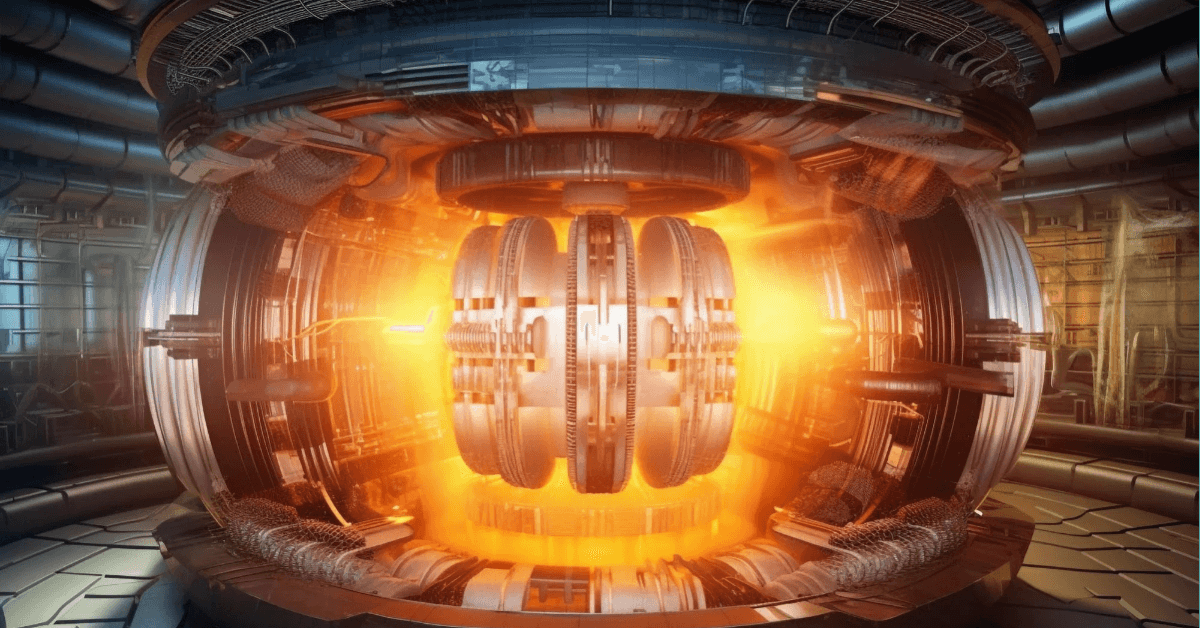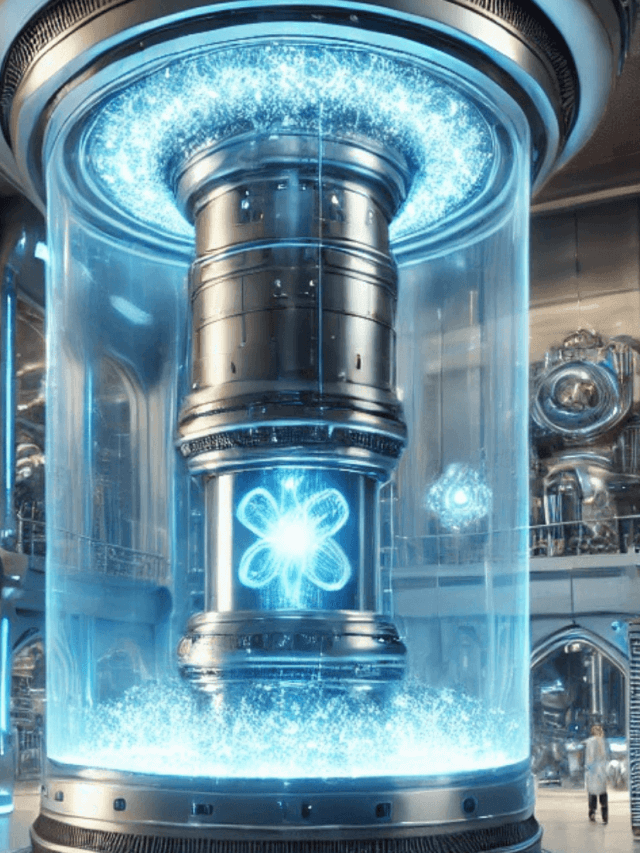The Future of Clean Power: Understanding Fusion Energy and Its Potential
Fusion energy promises clean, limitless power by mimicking the sun’s energy process. Discover how fusion works, its benefits, challenges, and how it could reshape our energy future.
Imagine an energy source as powerful as the sun, emitting no greenhouse gases, producing minimal waste, and offering a virtually limitless supply. This dream may soon be within reach, thanks to fusion energy. Fusion energy harnesses the same process that powers the stars to produce energy sustainably and could revolutionize how we power our world. This guide explains what fusion energy is, its benefits, the science behind it, current challenges, and why it might be the solution to the global energy crisis.
What is Fusion Energy?
Fusion energy is created through the fusion of atomic nuclei, primarily hydrogen atoms, which release a tremendous amount of energy. Unlike nuclear fission, which splits heavy atoms to generate power, fusion combines light atoms (like hydrogen) into heavier elements. This process is clean, efficient, and incredibly powerful, producing energy without the long-lived radioactive waste typically associated with nuclear fission.
How Does Fusion Energy Work?
Fusion occurs under extreme conditions of heat and pressure, allowing atomic nuclei to overcome their natural repulsion and bond together. This is achieved by heating hydrogen isotopes, like deuterium and tritium, to tens of millions of degrees—creating a state of matter called plasma, where particles move fast enough to fuse.
Scientists use powerful magnetic fields to contain and stabilize this plasma within reactors, such as tokamaks and stellarators. Once fusion is sustained, it releases energy that can be converted into electricity, offering an energy source that could theoretically power our civilization for centuries.
Why Fusion Energy Matters
Fusion energy could address several pressing issues facing humanity today:
- Clean Energy: Fusion produces no carbon emissions, meaning it could provide a sustainable solution to help combat climate change.
- Minimal Waste: Unlike fission, fusion generates negligible amounts of short-lived radioactive waste, making it safer and more manageable.
- Abundant Fuel Supply: The primary fuel for fusion, hydrogen, is plentiful in seawater, ensuring a nearly unlimited energy source.
- Energy Security: Fusion energy can reduce reliance on fossil fuels, helping countries achieve energy independence and secure a stable power supply.
Fusion Energy Technologies
There are several key technologies and approaches being explored in the race to achieve sustainable fusion energy:
- Tokamak Reactors: Tokamaks use magnetic fields to confine the hot plasma in a donut-shaped chamber. The ITER project in France, one of the largest fusion experiments, uses this design and aims to prove that large-scale fusion is possible.
- Stellarator Reactors: Stellarators, like the Wendelstein 7-X in Germany, use complex, twisted magnetic fields to confine plasma without the need for the strong current needed in tokamaks. This design offers potentially longer periods of stability.
- Laser-Driven Fusion: This approach, used by the National Ignition Facility (NIF) in the United States, employs high-powered lasers to compress and heat a small fuel pellet, initiating fusion. Laser fusion is still in experimental stages but holds promise for future applications.
- Magnetized Target Fusion: This technique combines magnetic and inertial confinement, compressing plasma with magnetic fields and physical pressure to achieve fusion. Companies like General Fusion are actively developing this technology.
Current Challenges in Fusion Energy
While fusion offers incredible potential, there are still significant technical and scientific hurdles to overcome:
- Extreme Conditions Required: Achieving and sustaining the conditions needed for fusion (temperatures over 100 million degrees Celsius) is difficult and requires complex containment solutions.
- Energy Input vs. Output: Currently, more energy is often needed to initiate and sustain fusion than the amount produced. Ongoing research aims to create a net-positive energy output, meaning reactors produce more energy than they consume.
- Cost and Scale: Building fusion reactors requires advanced materials and large, expensive facilities. Investments in research and development are critical to making fusion a viable, cost-effective energy source.
Recent Breakthroughs and Future Prospects
In recent years, significant breakthroughs have brought fusion closer to reality. The ITER project achieved a successful plasma generation, proving that fusion reactions on a large scale are possible. Meanwhile, companies like Helion and Commonwealth Fusion Systems are developing smaller, more efficient reactors with private investments.
The next decade promises exciting progress in fusion technology, with the goal of achieving commercial, grid-ready fusion reactors by the 2030s. If successful, fusion could transform the global energy landscape, helping meet rising energy demands while reducing carbon emissions.
How Fusion Could Reshape Our World
The arrival of fusion energy would have far-reaching impacts on society:
- Climate Change Mitigation: Fusion energy’s clean, carbon-free nature could significantly reduce reliance on fossil fuels, helping to combat global warming.
- Economic Growth and Energy Security: Countries with access to fusion technology could achieve energy independence, leading to economic stability and growth.
- Innovation in Other Fields: The development of fusion reactors is spurring advancements in materials science, engineering, and energy storage, creating a ripple effect of innovation across industries.
Fusion energy holds the potential to redefine how we power our world, offering a clean, nearly limitless energy source that addresses some of the most critical challenges facing humanity. While the journey toward commercial fusion energy is still ongoing, the technological advancements and dedicated research in the field give us hope for a brighter, more sustainable future. As we stand on the brink of a new energy era, fusion energy could soon shift from a scientific aspiration to a practical, world-changing reality.
Stay informed on the latest in energy advancements and sustainability with PressUpdates, where we bring you insights into emerging technologies shaping our future.

Fusion Energy: The Power of the Future and the Next Big Breakthrough
What is fusion energy, and how does it differ from nuclear fission?
Fusion energy is created by fusing atomic nuclei, typically hydrogen atoms, to form a heavier nucleus. This process releases a tremendous amount of energy, similar to the sun’s power generation. Unlike nuclear fission, which splits heavy atoms and produces long-lived radioactive waste, fusion combines light atoms and generates minimal, short-lived waste, making it a cleaner energy source.
Why is fusion energy considered a potential game-changer for the environment?
Fusion energy produces no greenhouse gases and only minimal radioactive waste. Its primary fuel source, hydrogen, is abundant and easily accessible, unlike finite fossil fuels. This could significantly reduce carbon emissions and dependence on nonrenewable resources, offering a sustainable energy alternative.
What are the main challenges in achieving commercial fusion energy?
Achieving fusion requires extremely high temperatures and advanced containment systems to keep the plasma stable. Currently, the energy needed to create and maintain fusion reactions often exceeds the energy generated. Scientists are working on breakthroughs to overcome these challenges, focusing on energy efficiency and reactor stability.
What technologies are being used to develop fusion reactors?
Some leading technologies include tokamak reactors, which use strong magnetic fields to contain plasma in a donut shape, and stellarators, which use twisted magnetic fields for better plasma stability. Laser-driven fusion, which uses high-powered lasers to compress and heat fuel, is also being explored.
How close are we to having fusion energy on the grid?
While we’re closer than ever, it’s still likely a decade or more away from large-scale, commercial use. Projects like ITER in France and private companies’ efforts show promising advancements, with some targeting the 2030s for the first commercial fusion reactors.
How does fusion energy compare to renewable energy sources like solar or wind?
Fusion energy offers a continuous power supply without depending on weather conditions, unlike solar or wind. It’s also cleaner than fossil fuels, with minimal waste and no carbon emissions. While solar and wind will remain vital, fusion could provide a more consistent, large-scale energy solution in the future.
What countries are leading in fusion energy research?
The United States, European Union, China, and Japan are leaders in fusion research, investing billions into facilities and partnerships like ITER. Collaborative efforts among countries help advance this complex technology and bring fusion closer to reality.
How safe is fusion energy?
Fusion energy is inherently safe because any disruption in the reactor quickly stops the reaction, preventing meltdowns. Additionally, fusion generates little long-lived radioactive waste, unlike fission, and doesn’t produce hazardous materials that require extended containment.
Can fusion energy help reduce electricity costs?
In the long term, fusion energy could lead to lower electricity costs due to its abundance and efficiency. Initial infrastructure and research are costly, but as technology advances and scales up, fusion could offer affordable, sustainable energy for global needs.
How can I stay updated on fusion energy developments?
Following scientific organizations, energy news outlets, and initiatives like ITER can keep you informed on the latest in fusion technology. Sites like PressUpdates also offer regular insights into breakthroughs in energy and sustainability.







